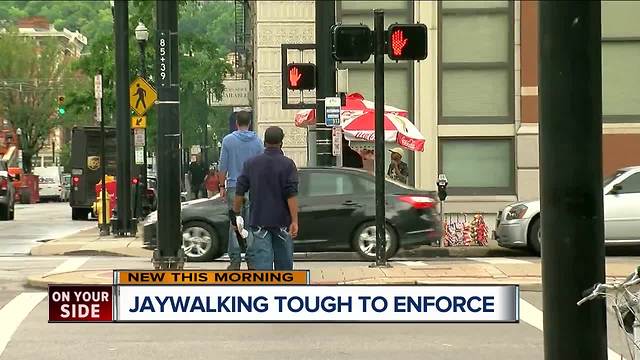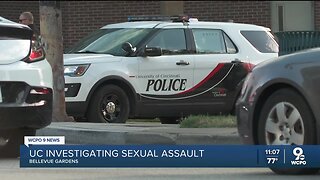Premium Only Content

'Jaywalking' wasn't always a crime, but Cincinnati helped it become one
If you've ever crossed the street outside of a crosswalk and felt bad about it, you might have the Queen City to thank. Well, at least in part. It might surprise some today that the term "jaywalking" actually developed from the term "jay driver," because back in the 1920s -- when automobiles were still somewhat an oddity -- it was a term often used to describe a motorist who struck a pedestrian crossing the street. "Jay" was a term used to describe someone as "not in the know." Being the heavily car-reliant city it is today, it might also surprise some that Cincinnati was the first U.S. city to try to protect pedestrians on the street. In the early 1920s, the city attempted to pass a law that would have required automobiles to be outfitted with a device that would shut off the engine if it reached a speed greater than 25 miles per hour. That law didn't pass, due in most part to efforts from the auto industry -- efforts that expanded nationwide eventually to claim the street as the dominion of the car. Down with the 'governors' The term "jaywalking" didn't originate in Cincinnati, but we might have made it more familiar. History professor Peter Norton, author of the book "Fighting Traffic," traced the term's first use back to December 1913 in Syracuse, New York, when a department store hired a Santa Claus who would stand near the street with a megaphone and yell at people crossing the street outside designated areas. As automobiles became more common, so did incidents involving pedestrians being struck. This prompted a coalition in Cincinnati to push for legislation requiring automobiles using city streets be equipped with governors. These devices would cause the engine to shut down at speeds higher than 25 miles per hour. Despite the measure's failure at City Hall, it caused local auto dealers -- and the auto industry at large -- to panic, Norton said. Thus began an extended campaign warning pedestrians against the dangers of being in the street, combined with heavy promotion of the automobile as an essential part of American life, according to Norton. City after city, including Cincinnati, began passing anti-jaywalking laws. Schools began teaching children that streets are for cars only. It didn't take long for the "look both ways" mentality to become ubiquitous across America.
-
 2:42
2:42
WCPO
1 year agoUC police investigating sexual assault
368 -
 1:55
1:55
Newsy
4 years agoIt Wasn't Always Clear Who Patrolled DC This Week
512 -
 1:49
1:49
WCPO
4 years agoFormer Cincinnati jail to become day center for people experiencing homelessness
41 -
 0:29
0:29
Daboskusu
4 years agoRevenge Revenge Revenge - Daboskusu always returns to the scene of the crime
18 -
 0:12
0:12
Tweetysweet
4 years agoSTRONG ALWAYS 🪁🪁😍🌹🌍
68 -
 0:06
0:06
khetrific
4 years agoAlways fix your divots
341 -
 1:17
1:17
WMAR
4 years agoKids become superheroes!
58 -
 0:27
0:27
IGY6Grief
4 years agoAlways Listen
781 -
 1:03
1:03
GiiRii
4 years agoTACOMA ALWAYS PREFORMS!!!
40 -
 44:59
44:59
WCPO
4 years agoThis Week in Cincinnati: 11-1
6